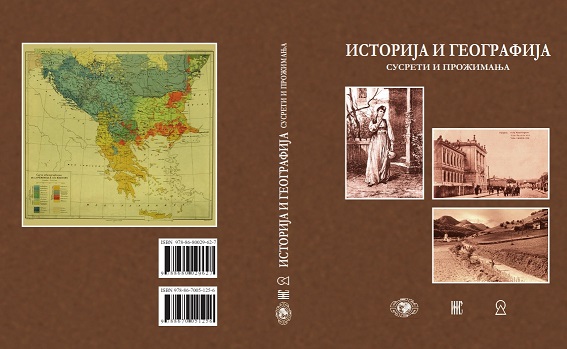Националне мањине у Србији 1945–1961: Политички значај
National Minorities in Serbia 1945–1961: Political Significance
Author(s): Slobodan Selinić
Subject(s): Social history, Demography and human biology, WW II and following years (1940 - 1949), Post-War period (1950 - 1989), Inter-Ethnic Relations, Ethnic Minorities Studies, Sociology of Politics
Published by: Institut za noviju istoriju Srbije
Keywords: National minorities; Serbia; the Albanians; the Bulgarians; the Hungarians; the Romanians; the Slovaks; the Turks;
Summary/Abstract: According to the census of 1953, nearly a million and a half members of minorities lived in Serbia, i.e. about one-fifth of the population of Serbia. In Vojvodina, the minorities accounted for 38% of the population, and 71% in Kosovo and Metohija. The most significant minorities were: the Albanians, Hungarians, Romanians, Slovaks, Bulgarians and Turks. In Kosovo and Metohija, in 1948 the Albanians accounted for 68.4 % of the population, in 1953 – 64.9 % and in 1961 – 67 %. In Vojvodina, in 1953 the Hungarians accounted for 25.4%, the Slovaks 4.28 % and the Romanians 3.3% of the population. The Bulgarians were approximately 66 % of the population of six municipalities of the districts of Pirot and Vranje. Since, except for the Slovaks, other minorities largely collaborated with the fascist occupier during the Second World War, the liberation of the country in 1944/45 was met with discontent among many minorities, but the greatest resistance was offered by members of the Albanian minority during armed insurrection from December 1944 to February 1945. Even during the conflict between Yugoslavia and IB there were enemies of Yugoslavia among minorities, although the commitment to the IB had a mass character only with the Bulgarians. After normalization of relations between Yugoslavia and the countries of the Eastern bloc, the minorities were the subject of great interests of their home countries and diplomats in Yugoslavia. Impacts from the mother countries were spread on the minorities by correspondence, relationships with family, sending publications and promotional materials, visits, but the influences from the West also reached the minorities through the activities of the church, western missions in Yugoslavia or minority immigrants. Official government policy towards minorities was based on the principle of equality and assurance of the minority rights. The government was trying to ensure equality of minorities even in terms of their participation in government bodies, to ensure that as many minorities are affiliated in the SKJ (Communist League of Yugoslavia), SSRN (Socialist Alliance of Workers), AFŽ (Antifascist Women’s Front), the National Youth and other organizations, so that the minorities were represented in these organizations and in authorities generally in proportion to their share in the total population.
Book: Историја и географија: Сусрети и прожимања
- Page Range: 369-394
- Page Count: 26
- Publication Year: 2014
- Language: Serbian
- Content File-PDF

